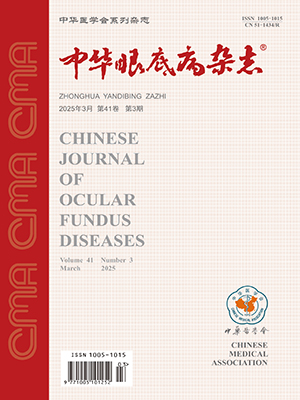ObjectivesTo evaluate the effect of peeling of internal limiting membrane (ILM) on the postoperative visual acuity in patients with diabetic macular edema, and to detect the role indocyanine green (ICG) plays in the surgery of peeling of ILM. MethodsThirty patients (31 eyes) with diabetic retinopathy at proliferative stage with macular edema underwent vitrectomy. The patients were randomly divided into two groups: 16 eyes in group A underwent single vitrectomy with panretinal photocoagulation and ocular filling with 20% SF6; 15 eyes in group B underwent vitrectomy and peeling of ILM after the posterior pole was stained with ICG. All of the patients were asked to keep the posture of facing down for 10-14 days. The follow-up lasted 3-12 months.ResultsIn 16 eyes in group A, the visual acuity increase of 2 or more lines in 10 (62.5%) and alleviation of macular edema in 9 (56.2%) were found; the postoperative average macular retinal thickness examined by optic coherence tomography (OCT) was 393 μm. In 15 eyes in group B, the visual acuity increase of 2 or more lines in 14 (93.3%) and alleviation of macular edema in 14 (93.3%) were found; the postoperative average macular retinal thickness was 319 μm. The postoperative improvement of visual acuity in group B was much better than that in group A (X2=4.210, P=0.05), while the postoperative macular retinal thickness in group B was obviously lower than that in group A (P<0.01). The operative sample was proved to be the ILM. ConclusionsVitrectomy is effective for diabetic macular edema and the curative effect may be improved by peeling of ILM; ICG can dye ILM well, which ensures the safe and accurate peeling of ILM.(Chin J Ocul Fundus Dis, 2005,21:138-141)
Citation: LIU Zheli,SUN Peng.. Curative effect of peeling of the internal limiting membrane on diabetic macular edema. Chinese Journal of Ocular Fundus Diseases, 2005, 21(3): 138-141. doi: Copy
Copyright © the editorial department of Chinese Journal of Ocular Fundus Diseases of West China Medical Publisher. All rights reserved




